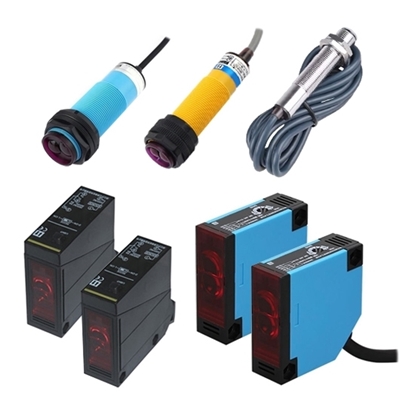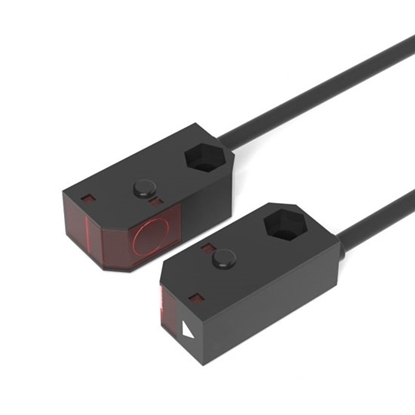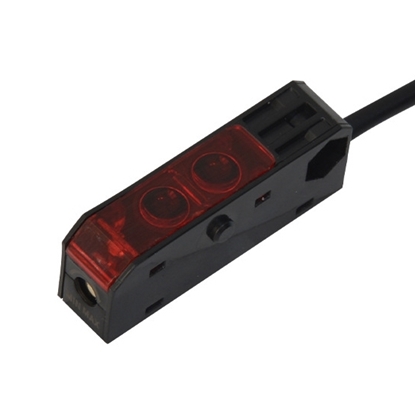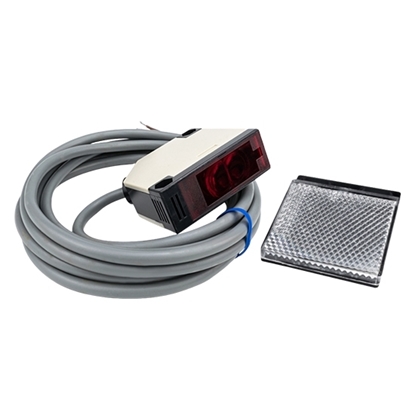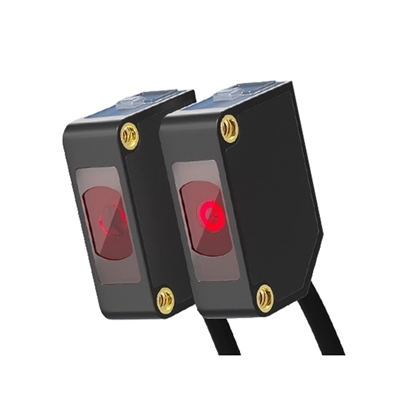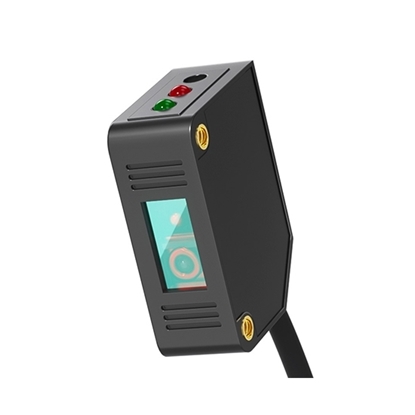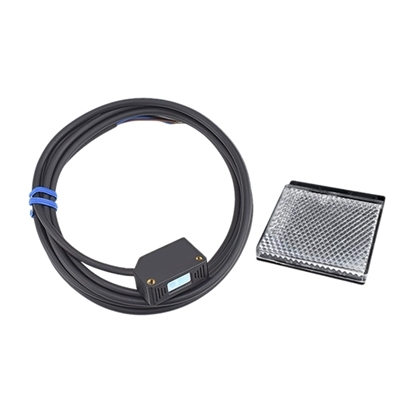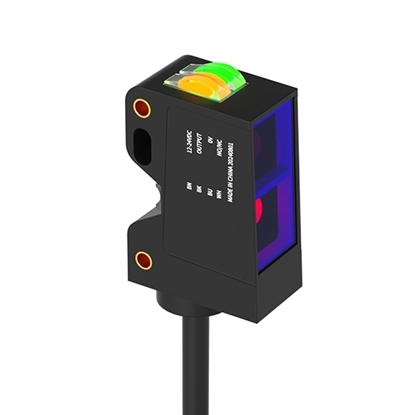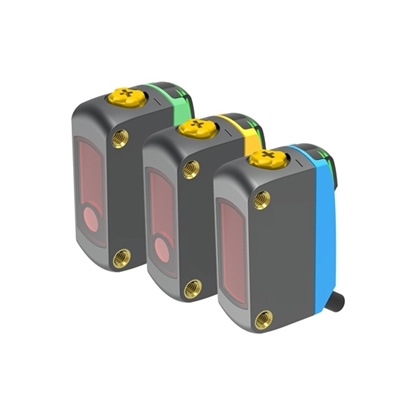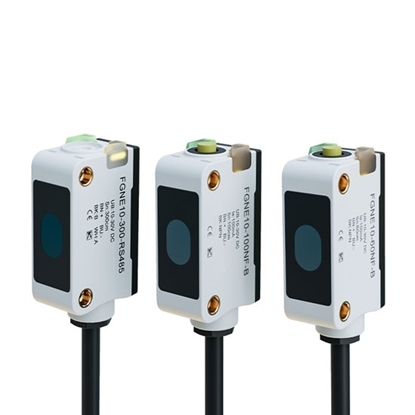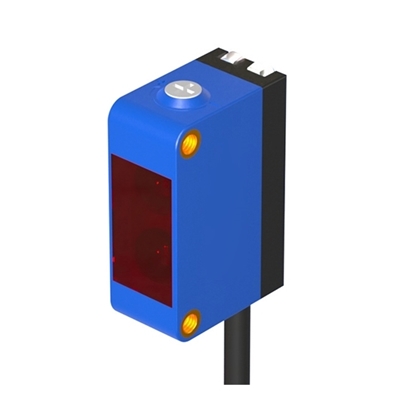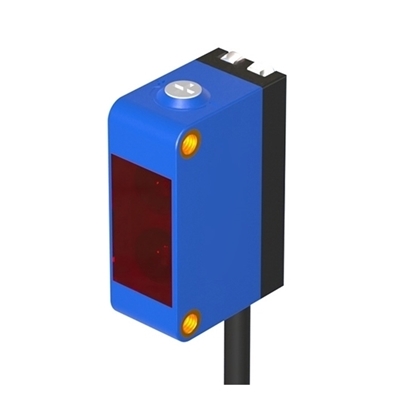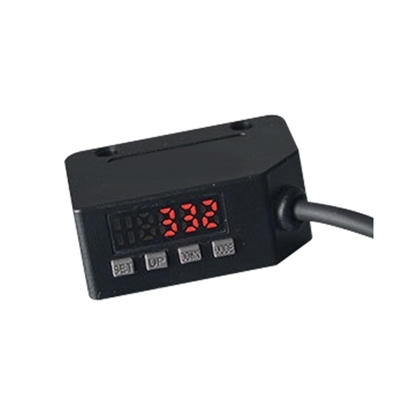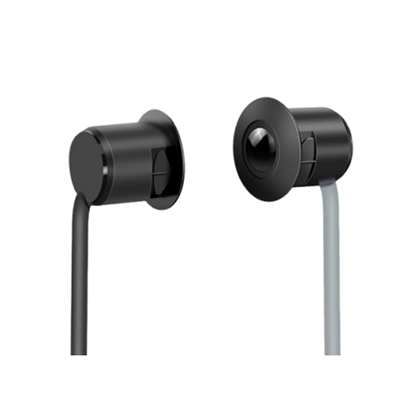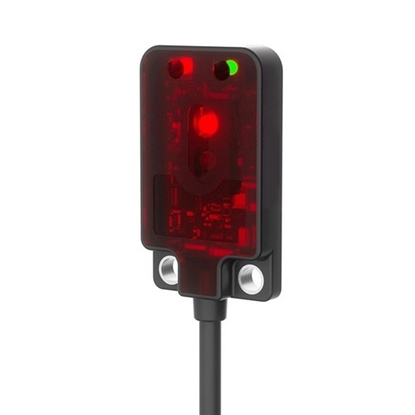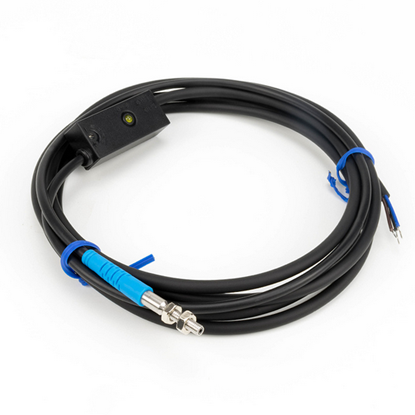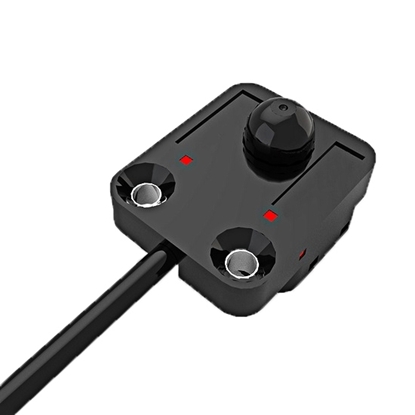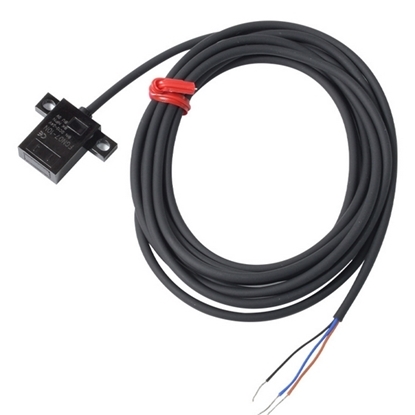Shopping cart
Search
Photoelectric Sensor
Through Beam Photoelectric Sensor
$23.99
SKU: ATO-PHOS-TB
Through beam photoelectric sensor consists of a light projector and a light receiver, both of which are separated in structure. The supply voltage is DC 12V-24V or AC 110V-220V. Infrared photoelectric sensor can distinguish the opaque reflective object, with long effective detection distance 5/15/50m, less susceptible to interference, long life, and high reliability.
Diffuse Reflective Photoelectric Sensor
$46.27
SKU: ATO-PHOS-DR
Diffuse reflective photoelectric sensor consists of light projector and light receiver in one, can distinguish transparent or opaque reflective object. The supply voltage is DC 12V-24V (6-36V) or AC 110V-220V (90-250V). Infrared photoelectric sensor can be compensated for longer distance with sensitivity controller, less susceptible to interference, fast reaction, long life, high resolution and high reliability.
Retro-reflective Photoelectric Sensor
$50.22
SKU: ATO-PHOS-RR
Retro-reflective photoelectric sensor consists of light projector and light receiver in one, has long effective distance range with the help of reflective board. The supply voltage is DC 12V-24V (6-36V) or AC 110V-220V (90-250V). Infrared photoelectric sensor can distinguish the opaque reflective object, with less susceptible to interference, fast reaction, long life, high resolution and high reliability.
Infrared Through Beam Photoelectric Sensor, 50-150cm
$74.12
SKU: ATO-PHOS-ITB
The infrared through beam photoelectric sensor delivers precise and rapid detection with a 1.5 m sensing range, 940 nm infrared light source, and response time under 1 ms. Featuring a durable PC housing and IP54 protection, mini photoelectric sensor ensures stable operation in demanding environments such as chemical processing, production lines, textile manufacturing, CNC machinery, and escalator automation systems.
Infrared Diffuse Reflective Photoelectric Sensor, 10cm
$73.29
SKU: ATO-PHOS-IDR
Infrared diffuse reflective photoelectric sensor for sale, delivering precise and rapid detection with a 10cm sensing range, 940 nm infrared light source and response time under 1 ms. Featuring a durable PC housing and IP54 protection, mini photoelectric sensor ensures stable operation in demanding environments such as chemical processing, production lines, textile manufacturing, CNC machinery, and escalator automation systems.
Infrared Retro Reflective Photoelectric Sensor, 4m
$52.59
SKU: ATO-PHOS-IRR
Infrared retro reflective photoelectric sensor uses invisible infrared light to provide precise and reliable object detection over a distance of up to 4 meters. The detection distance can be easily adjusted to suit various application requirements.With a wide operating voltage range of 10–30V, this mini photo sensor delivers high detection accuracy, strong anti-interference performance, and long service life. Built with high-temperature resistance and premium pure copper wiring, it guarantees durability and consistent performance even in demanding environments.
Laser Trough Beam Photoelectric Sensor, 20m, 12-24VDC
$65.29
SKU: ATO-PHOS-LTB
Laser through beam photoelectric sensor, detection distance 20 m, supply voltage DC 12–24 V, with multiple protection functions to protect both the photo sensor and connected equipment, including short-circuit protection, polarity protection, and over-voltage protection. Equipped with high-quality electronic components, high-sensitivity laser sensing head, and PU material cable.
Laser Diffuse Reflective Photoelectric Sensor, 300mm, 12-24VDC
$60.41
SKU: ATO-PHOS-LDR
Laser diffuse reflective photoelectric sensor with an adjustable detection distance of 300 mm, suitable for various measurement applications. Features a visible red beam for easy installation and alignment, allowing precise adjustment of the optimal detection position. Equipped with a glass-coated optical filter to block unwanted light and electromagnetic interference for more accurate signal reception.
Laser Retro Reflective Photoelectric Sensor, 8m, 10-30VDC
$50.59
SKU: ATO-PHOS-LRR
Laser retro reflective photoelectric sensor with an adjustable detection distance of 8m and visible red beam. Designed with multiple protection features for safe and stable operation, safeguarding both the photo sensor and connected equipment. Equipped with advanced laser components, voltage regulation module, and intelligent chip, ensuring more stable signals, more stable internal voltage, and higher accuracy.
Infrared Photoelectric Sensor, Background Suppression, 25-300mm
$68.88
SKU: ATO-PHOS-IBS
The infrared photoelectric sensor delivers color-independent detection and background suppression through its self-adjusting sensitivity. A clear dual-color indicator displays the operational status, while integrated protection mechanisms guarantee safe use across a wide range of applications. Equipped with imported components and pure copper wiring, the mini photo sensor ensures high sensitivity and long-term stability.
Laser Photoelectric Sensor, Background Suppression Sensor
$57.52
SKU: ATO-PHOS-40
The provided laser photoelectric sensor is a background suppression sensor, which is not affected by the color of the detected object. With NPN NO/NPN NC output, IP67 waterproof level, strong anti-interference and 600mm long detection distance, this square photoelectric switch is suitable for assembly line detection and logistics sorting detection, circuit board inspection, mechanical inspection, etc.
Background Suppression Photo Sensor, NPN/ PNP/ RS485
$136.66
SKU: ATO-PHOS-BS
Background suppression photo sensor with NPN/PNP/RS485 outputs, unaffected by the color or angle of the target, offering high precision. Resistant to sunlight, featuring one-key setting and no blind spots. Equipped with short-circuit, overvoltage, and polarity protection. Capable of detecting black, transparent, and other colored objects. Flame-retardant and wear-resistant PVC wires.
LED Photoelectric Sensor, Background Suppression, 30cm
$76.17
SKU: ATO-PHOS-LBS
The LED photoelectric sensor features a 1–30 cm adjustable detection range with a high-brightness visible light spot for easy alignment. Its switchable NO/NC output ensures flexible use, while detection remains stable, unaffected by target color, and incorporates background suppression for accurate sensing even in complex environments. Multiple protections safeguard both the sensor and connected equipment, and the high-transmittance optical filter blocks interference from other light and electromagnetic signals, ensuring precise and reliable performance.
Photoelectric Distance Sensor, Diffuse Type, 10cm
$76.66
SKU: ATO-PHOS-DIS
The photoelectric distance sensor features a 10cm sensing distance with a visible red LED light. Its switchable NO/NC output ensures flexible use, while detection remains stable. Incorporating diffuse type for accurate sensing even in complex environments. Multiple protections safeguard both the sensor and connected equipment.
Digital Photoelectric Sensor, Diffuse Type, 30cm Adjustable
$96.77
SKU: ATO-PHOS-DDT
The digital photoelectric sensor for sale, employing diffuse reflection technology to precisely detect objects via surface-scattered light. Detection range is adjustable up to 30 cm and is suitable for both opaque and translucent targets.
Micro Ir Through Beam Photoelectric Switch, 10-30VDC
$43.24
SKU: ATO-PHOS-TZ
Mini infrared through beam photoelectric switch with a compact 45° clip-on design for easy installation, operating on DC 10–30V, offering high sensitivity, fast response, and strong resistance to light interference. Ideal for barrier gates, garage door openers, and various small automation devices, with durable, stable performance, IP65 protection.
Small Diffuse Photoelectric Sensor, 30cm, NPN/PNP
$52.06
SKU: ATO-PHOS-30CM
Small Diffuse Photoelectric Sensor has 30cm range. It offers reliable short-range sensing for confined automation spaces. Miniature housing eases integration into tight areas. Fast switching, stable diffuse sensing and NPN/PNP outputs ensure consistent performance. It is ideal for small-part positioning and assembly line verification.
Micro Ir Diffuse Photoelectric Switch, M3/M4/M5/M6/M8
$49.12
SKU: ATO-PHOS-M
Compact micro IR diffuse photoelectric switch with 10–30V wide voltage range and multi-protection design. Features imported optical module, a stainless steel shell, and 5ms fast response for stable, accurate detection. Ideal for automation and small equipment applications.
Micro Photoelectric Sensor, Button Type, 12V-24VDC
$67.94
SKU: ATO-PHOS-BT
Compact infrared photoelectric sensor with 12–24VDC power supply and 940nm IR LED. Provides precise detection for any color or material, ideal for semiconductor and automation equipment.
Mini Rectangular Photoelectric Switch, 10mm, 24V
$52.94
SKU: ATO-PHOS-24V
ATO Mini rectangular photoelectric switch features a compact body, offering a 0–10mm diffuse sensing distance and operating on 24V DC, while providing fast <1ms infrared detection for precise short-range performance in tight automation spaces.
- 1
- 2
Photoelectric sensors & photoelectric switches are composed of a light projector and a light receiver. The light projector converts the input current into an optical signal and emits infrared light. Since the detection object blocks or reflects the light beam, the light received by the light receiver will have changes, thereby photoelectric sensor can detect the object existing or not. The detection object is not only metal, but also any transparent or opaque object that can reflects light or blocks light, such as glass, rubber, wood, liquid, gas, etc. Because it is a non-contact detection, photoelectric sensors won't damage the detection objects, and be affected by them.
Photoelectric Sensor
Recently viewed products


